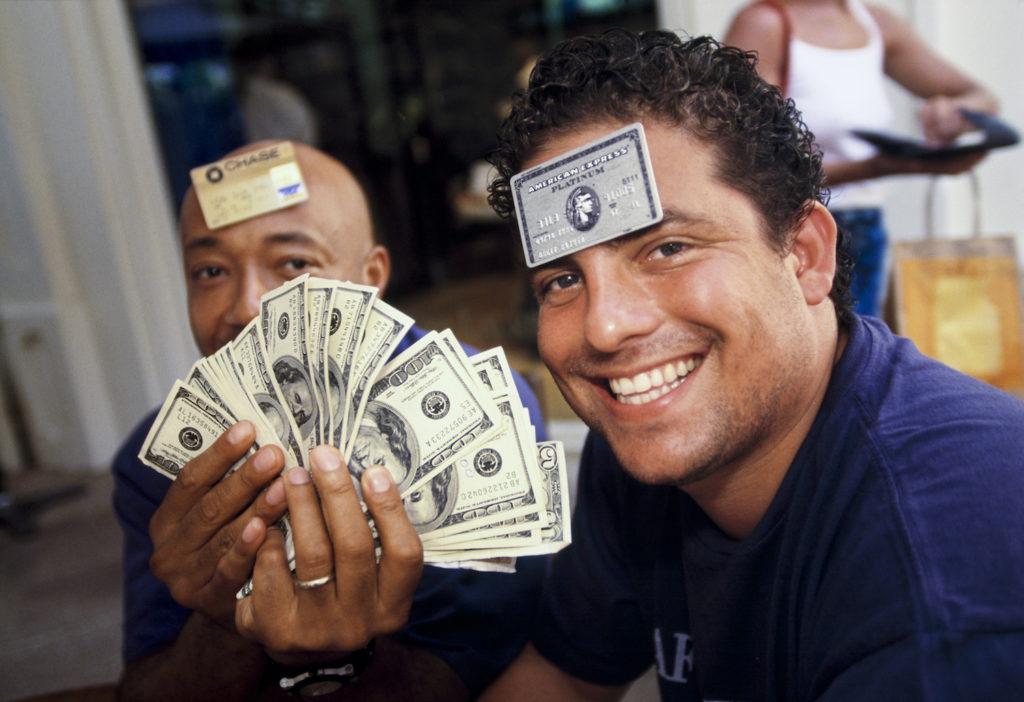The first surprise of photographer Lauren Greenfield‘s Sundance doc, which played at the Transilvania International Film Festival prior to its theatrical release in the U.S. in July, is that the family portrayed most compellingly in it is not particularly wealthy at all — it is Greenfield’s own, who come across as well-educated, well-adjusted (despite Greenfield’s frequent work-related absences from their lives) and firmly middle-class. As much as it documents the past few decades of rampant consumerism, “Generation Wealth” is an investigation into her own motives for a career spent examining the more extreme symptoms of American affluence — such as her last doc, about the building of the world’s biggest private residence, “The Queen of Versailles.”
This is really “The Story of the ‘Generation Wealth’ Project”: The film is one part of a multi-platform package that also comprises a traveling exhibition and a massive door-stop book for the sturdiest of coffee tables. And so as a documentary it is less than wholly rigorous, skipping back and forth between broad sociological investigation and personal memoir. But both halves are so engaging that the second surprise is that one doesn’t really mind, even though the eureka moment, where both strands suddenly coalesce and comment on each other, never materializes.
The reason for the bifurcated approach soon becomes clear: There is just so much material here. Greenfield has spent the last 25 years obsessively chronicling the clouds attached to the silver linings of wealth and celebrity and has a vast repertoire of stories, and a rich cast of characters to revisit. At times, it’s a “where are they now?” film, as she interviews some of the privileged high school kids from her first project inspired by Bret Easton Ellis‘ “Less Than Zero” (Ellis is also one of the talking heads). She discovers that the It-girl who was voted “best body” has matured into a hippie-ish mother who quails at the thought of her own daughter wearing the provocative clothing she did. And the son of the REO Speedwagon singer is now a 40-something recovering addict who chuckles ruefully at the bright image of his youthful self throwing a hedonistic jacuzzi party.
She reconnects with Kacey Jordan, the porn actress who gained brief notoriety as Charlie Sheen‘s consort at the height of his “winning” (read: coke-addled) phase; follows up with a hard-nosed venture capitalist, her face acid-peel exfoliated to a high pink shine, who calls it “un-American” to not love money; re-interviews the stage mom of “Toddlers and Tiaras” star Eden Wood, the child pageant queen famous for wearing a Vegas showgirl outfit at six years old; and most entertainingly, catches up with the tanned, gregarious Florian Homm, who accrued millions as a businessman, but now talks from a gilded exile in Germany, where he lives to avoid fraud charges. His estranged children, now young adults, are too well-bred to actually eye-roll when asked about their roguish Dad, but they might as well.
This is in marked contrast to the warmth of Greenfield’s down-to-earth segments with her own family, including her mother and her teenage son Noah, who emerges as one of the canniest subjects and helps make one of the film’s most interesting points. Greenfield’s voiceover relates how we used to model our lifestyles on those of our neighbors, but the rise of celebrity culture means that, as Noah points out, we probably know the names of the Kardashian family better than those of people next door (a very young Kim pops up in some of the photos here). And so we start to model our aspirations on people who occupy not just a different economic bracket from us, but an entirely different, unattainable social stratosphere. Hence: Unhappiness.
It’s not a wholly convincing argument, though. All her interviewees experienced negative side-effects from either having or desiring too much money. But then almost all of them lost their money, so it’s hard to say if it was excessive wealth, or the loss of it, that led to their dissatisfactions. Homm’s kids, for example, seem pretty sure that while their father does have regrets about his avaricious lifestyle, he mostly regrets getting caught. Same goes for the idea that all these riches indicate we’re living in the End Times, an impression reinforced by Greenfield’s orgiastic, pop-art images: One boffin sagely tells us that, like Egypt and Rome, societies accrue their greatest wealth at the moment of their demise, but really, that’s sort of meaningless without hindsight. There’s no way of telling just how late into “late capitalism” we are.
And so what we get is a film that is most fun when observing the cautionary lifestyles of the once-rich and adjacent-to-famous, but most insightful when it pulls outs of the fast lane and Greenfield’s eye turns inward on her own life. And the biggest piece of contradictory evidence to all those grand claims of social collapse may be the sheer normalcy of her own family. If they have managed to avoid the rampant consumerism, body image obsession and fatuous celebrity worship of modern life, despite their continuing exposure it, maybe there’s a chance the American Idea still has a few years left. Whether you can look at Greenfield’s photo of Brett Ratner, with a platinum AmEx on his forehead, a fan of $100 bills in his hand and a shit-eating grin on his face and decide that’s a good thing, is another question. [B]





